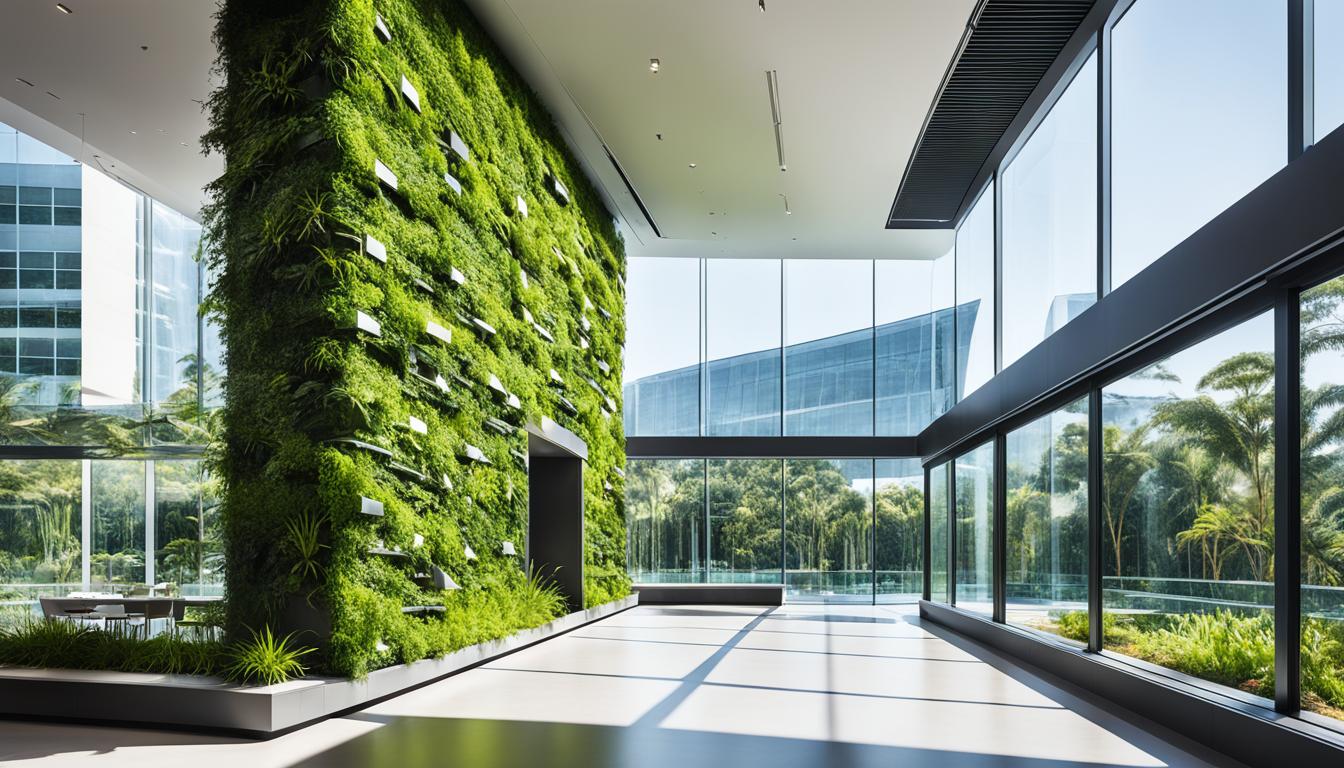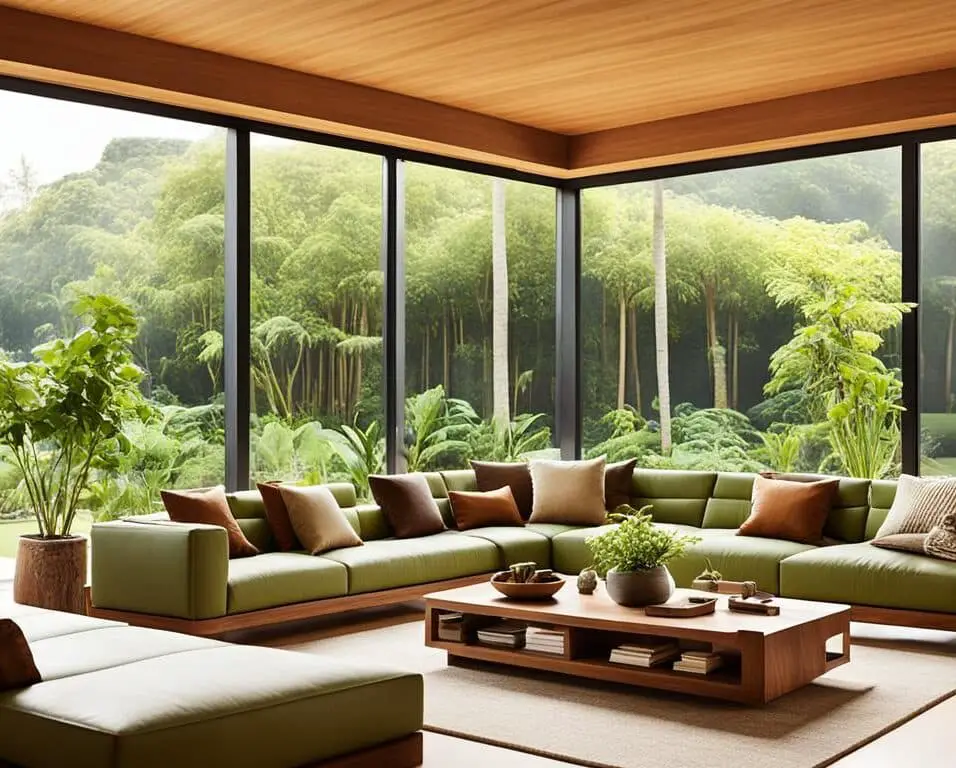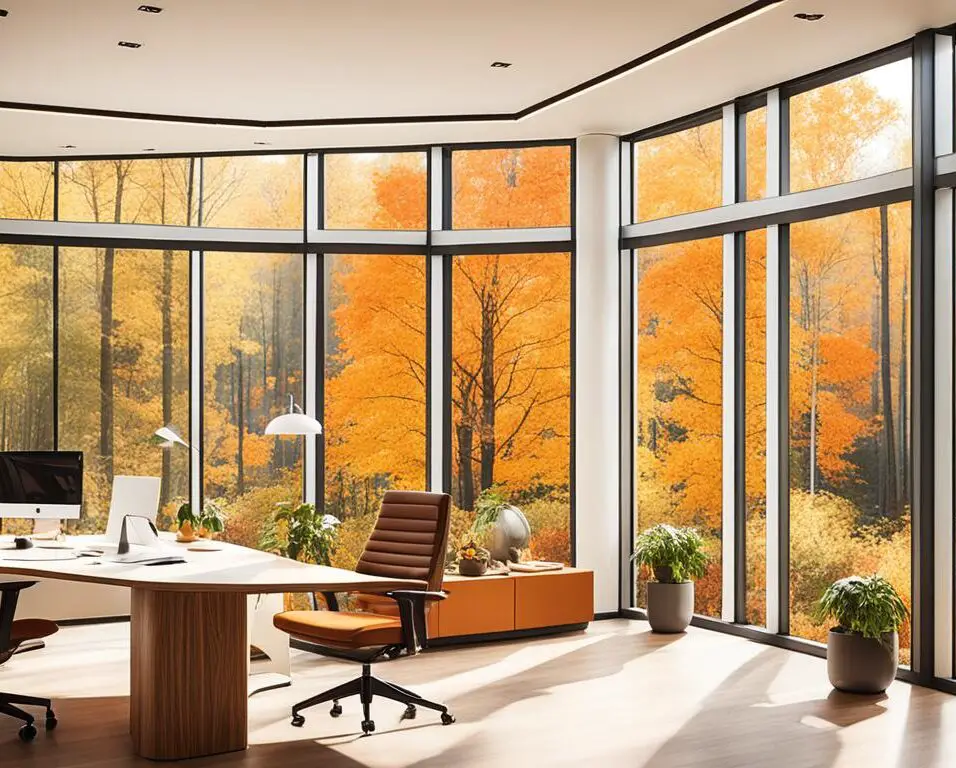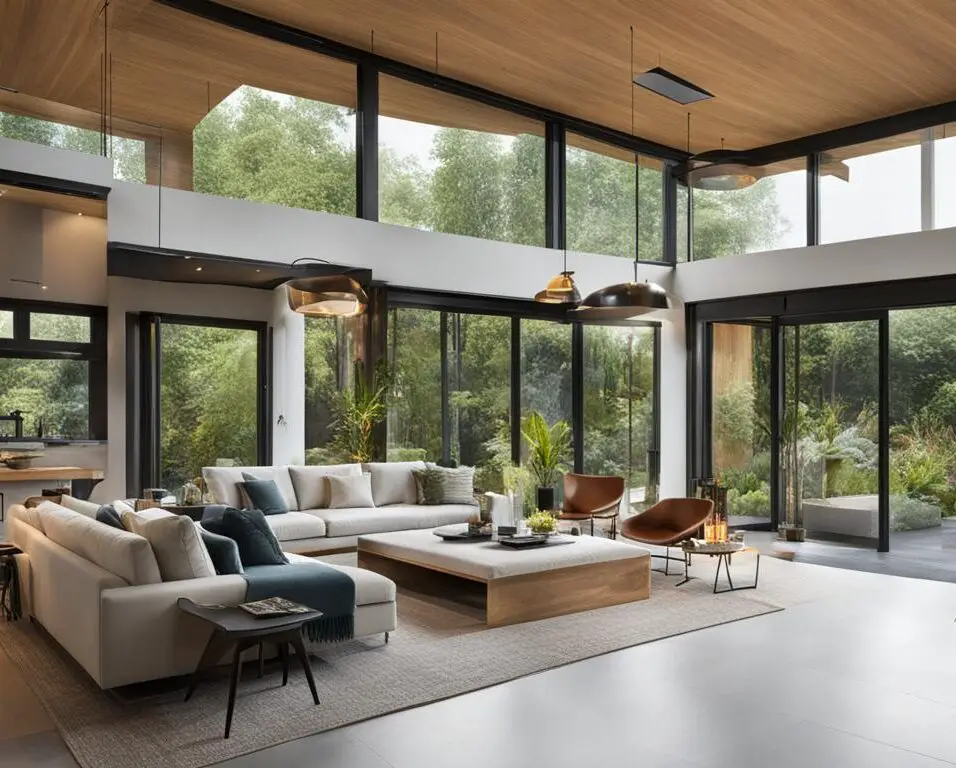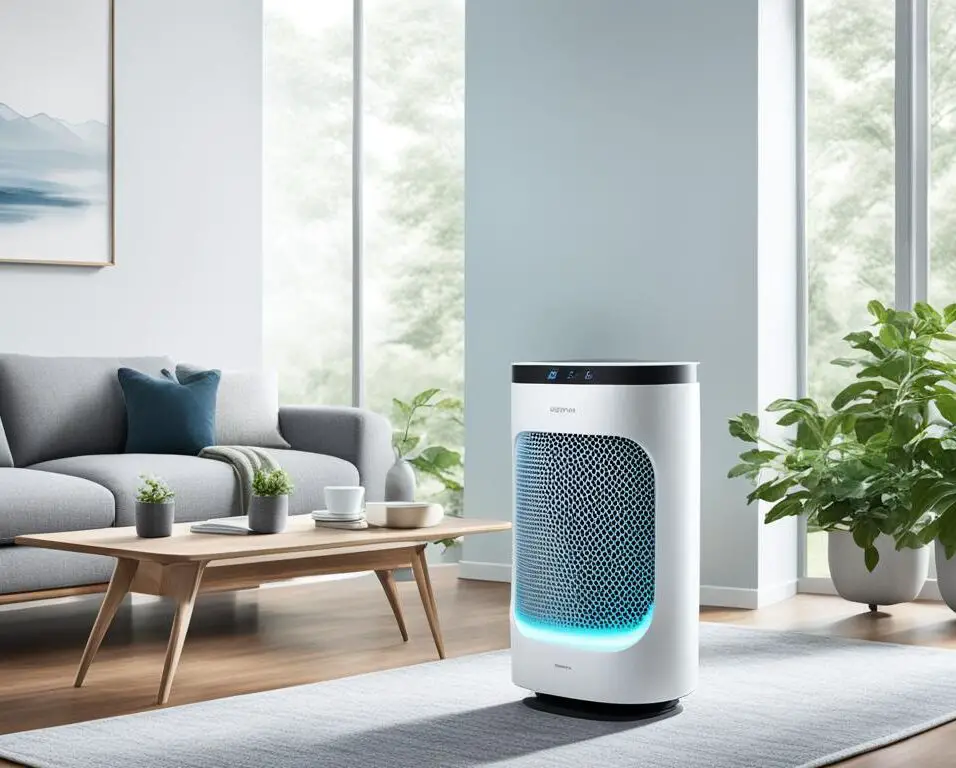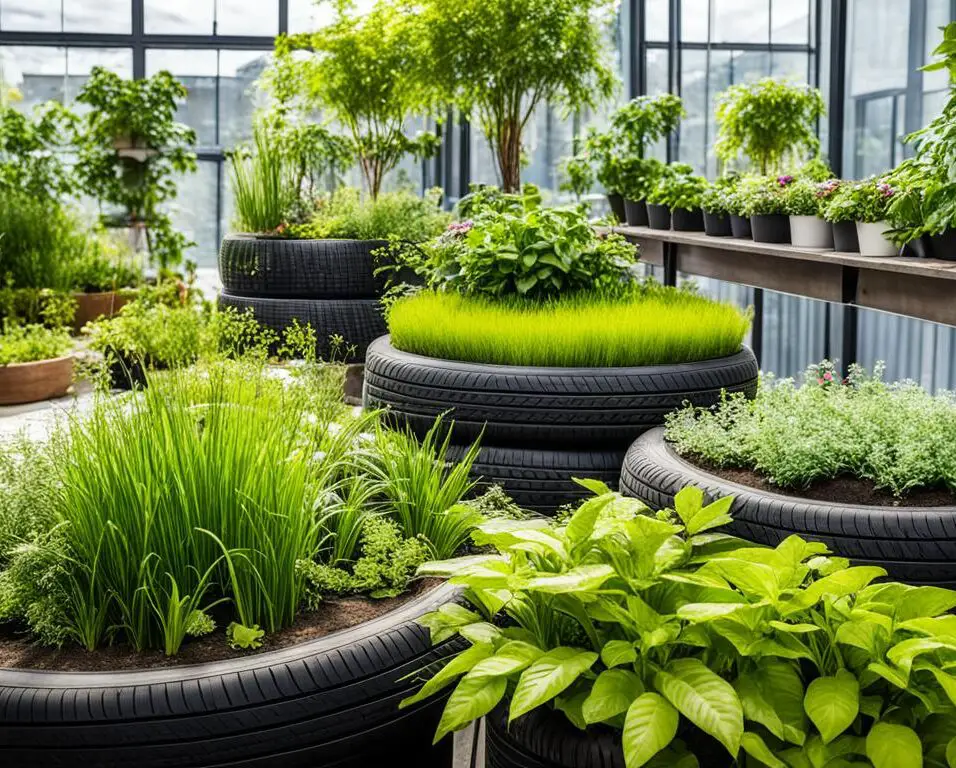Future-Proofing Structures: Tech Integration in Biophilic Architecture
As an architect passionate about sustainability, I am always looking for innovative ways to integrate technology into biophilic architecture. Biophilic design principles, which focus on incorporating natural elements and features into building designs, create healthier and more environmentally friendly spaces. By harnessing cutting-edge technologies and seamlessly integrating them into biophilic structures, we can optimize energy efficiency, improve occupant well-being, and contribute to long-term sustainability goals.
Tech integration in biophilic architecture enables us to create visually stunning structures that prioritize both aesthetics and functionality. From smart materials that respond to environmental conditions to responsive fenestration systems that dynamically adjust to optimize comfort, the possibilities are endless. By blurring the lines between indoor and outdoor spaces, these tech-integrated biophilic designs create comfortable and customizable environments for occupants.
Key Takeaways:
- Tech integration enhances sustainability and occupant well-being in biophilic architecture.
- Smart materials and responsive fenestration systems optimize energy efficiency and create comfortable environments.
- Tech-integrated biophilic designs offer visually stunning and customizable structures.
- The combination of technology and biophilic design principles contributes to long-term sustainability goals.
- Tech integration in biophilic architecture prioritizes both aesthetics and functionality.
The Transformation of Façade Designs in 2050
Façade designs in the future, specifically by 2050, are expected to undergo remarkable transformations driven by evolving architectural trends and technological advancements. One of the prominent changes will be the integration of smart materials and technologies in façades. These future façades will respond dynamically to environmental conditions, optimizing energy efficiency and enhancing occupant comfort. Sustainability will also play a pivotal role, with façades featuring advanced materials, such as recycled glass and energy-efficient coatings. Additionally, living walls and vertical gardens will become prevalent, improving air quality and adding aesthetic value to buildings. The integration of tech and sustainable materials will create multifunctional façades that serve as power generators, promoting the efficient use of natural resources.
Key Features of Future Façades:
- Integration of smart materials and technologies
- Dynamic response to environmental conditions
- Optimization of energy efficiency
- Enhancement of occupant comfort
- Utilization of sustainable materials
- Incorporation of recycled glass and energy-efficient coatings
- Integration of living walls and vertical gardens
- Improvement of air quality
- Addition of aesthetic value to buildings
- Multifunctionality as power generators
- Promotion of efficient use of natural resources
“The integration of tech and sustainable materials in façade designs of the future will revolutionize the way buildings interact with their surroundings. By harnessing advanced technologies and incorporating environmentally friendly materials, future façades will not only enhance energy efficiency but also improve the overall well-being of occupants.” – Architect Jane Davis
The Evolution of Façade and Fenestration Materials by 2050
Façade and fenestration materials are set to undergo a significant transformation by 2050, driven by sustainability, technology, and aesthetic trends. With an increasing focus on creating environmentally friendly structures, architects and designers are integrating sustainable materials into building exteriors. This fusion of aesthetics and functionality not only enhances the visual appeal of buildings but also contributes to long-term sustainability goals.
One key aspect of this evolution is the use of sustainable materials such as recycled glass and energy-efficient coatings. These materials not only minimize the environmental impact during production but also provide excellent insulation and durability. By incorporating sustainable materials into façades and fenestration, architects can create energy-efficient buildings that prioritize biophilic design principles. This blurs the lines between indoors and outdoors, fostering a deeper connection with nature for building occupants.
Solar-integrated façades are another exciting development in this evolution. By harnessing the power of renewable energy, these façades can generate electricity and contribute to the building’s energy needs. They incorporate photovoltaic cells and other solar technologies seamlessly into the building envelope. Solar-integrated façades not only reduce greenhouse gas emissions but also enable buildings to become self-sufficient in terms of energy consumption.
Furthermore, the emergence of self-healing materials is revolutionizing the maintenance and longevity of façades and fenestration. These innovative materials possess the ability to repair minor damages, such as cracks, without human intervention. This self-repairing capability reduces maintenance costs and extends the lifespan of the building components, resulting in more sustainable and cost-effective structures.
Advanced fenestration systems, incorporating smart glass technologies, are also shaping the future of building exteriors. Smart glass dynamically adjusts its tint and insulation properties based on external conditions, optimizing natural light and temperature control. These systems improve energy efficiency and occupant comfort by reducing excessive glare, heat gain, and the need for artificial lighting and HVAC systems.
The Benefits of Advanced Façade and Fenestration Materials
The evolution of façade and fenestration materials offers architects and designers a range of benefits in creating visually stunning and sustainable structures:
- Excellent insulation properties for energy-efficient buildings
- Enhanced durability and longevity of building exteriors
- Integration of renewable energy sources through solar-integrated façades
- Reduced maintenance costs and increased lifespan with self-healing materials
- Optimized natural light and temperature control with advanced fenestration systems
- Promotion of biophilic design principles, fostering a connection with nature
Comparison of Façade and Fenestration Materials
| Material Type | Properties | Advantages | Applications |
|---|---|---|---|
| Recycled Glass | Energy-efficient, excellent insulation properties | – Sustainable – Durable and weather-resistant – Aesthetic appeal |
– Building façades – Windows and doors |
| Solar-Integrated Materials | Generate renewable energy, reduce carbon footprint | – Self-sufficiency in energy consumption – Lower greenhouse gas emissions – Cost-effective |
– Building façades – Roof installations |
| Self-Healing Materials | Ability to repair minor damages, reduce maintenance costs | – Extended lifespan of building components – Reduction in repair and replacement costs – Sustainable maintenance practices |
– Façade panels – Window frames |
| Smart Glass | Dynamically adjusts tint and insulation properties | – Energy-efficient lighting and temperature control – Reduced glare and heat gain – Enhanced occupant comfort |
– Windows and skylights – Glass partitions |
The evolution of façade and fenestration materials by 2050 offers architects and designers a wealth of sustainable, energy-efficient, and visually appealing options. By incorporating these innovative materials into building designs, professionals can create structures that contribute to a more sustainable future while providing occupants with comfortable and inspiring environments.
The Role of Façade and Fenestration Technologies in 2050
In the year 2050, buildings will undergo a transformative shift, becoming dynamic and sustainable structures that actively contribute to environmental goals. Through the integration of advanced technologies, façades and fenestrations will play a crucial role in creating buildings that are energy-efficient, visually stunning, and responsive to occupants’ needs.
Façades of the future will incorporate integrated technology for energy harvesting, allowing buildings to become more sustainable and reduce their carbon footprint. By utilizing innovative systems, such as photovoltaic panels and wind turbines integrated into the building exterior, structures will generate clean and renewable energy. This integration of technology and architecture will pave the way for a cleaner and greener future.
Smart glass will revolutionize the way buildings interact with their surroundings. Evolving from its current state, smart glass of the future will offer dynamic control of transparency and insulation properties. This advancement will allow buildings to optimize natural light, reduce heat gain or loss, and create comfortable indoor environments. Occupants will experience enhanced visual connections with the outdoors while benefiting from improved thermal comfort.
The integration of living walls and greenery into façades will not only contribute to the aesthetics of buildings but also promote occupant well-being. These nature-inspired elements will enhance air quality, lower ambient temperatures, and create a harmonious connection between the built environment and nature. Additionally, responsive materials and advanced insulation technologies will improve thermal comfort, reducing energy consumption and costs.
“The future of façade and fenestration technologies lies in their ability to create comfortable and sustainable built environments while embracing cutting-edge advancements.” – [Author Name]
Another exciting development in façade and fenestration technologies is the incorporation of augmented reality (AR) displays. Fenestration systems will feature transparent AR screens, providing real-time data on energy consumption, indoor air quality, and environmental conditions. This integration will empower occupants with valuable insights, allowing for informed decisions regarding energy usage and environmental sustainability.
To showcase the exciting advancements discussed, below is a detailed table highlighting the key technologies and their benefits:
| Technology | Benefits |
|---|---|
| Integrated Technology for Energy Harvesting | – Reduced carbon footprint – Sustainable energy generation – Lower operational costs |
| Smart Glass | – Optimized natural light – Improved thermal comfort – Energy-efficient designs |
| Living Walls and Greenery | – Enhanced aesthetics – Improved air quality – Temperature regulation |
| Responsive Materials and Advanced Insulation | – Increased thermal comfort – Energy savings – Sustainable building designs |
| Augmented Reality Displays | – Real-time data visualization – Energy consumption monitoring – Enhanced user experience |
By harnessing the potential of these technologies, façades and fenestrations will revolutionize the way buildings function, offering enhanced sustainability, visual appeal, and occupant comfort. The integration of tech and architecture will pave the way for a new era of buildings that actively contribute to a more sustainable and eco-conscious future.
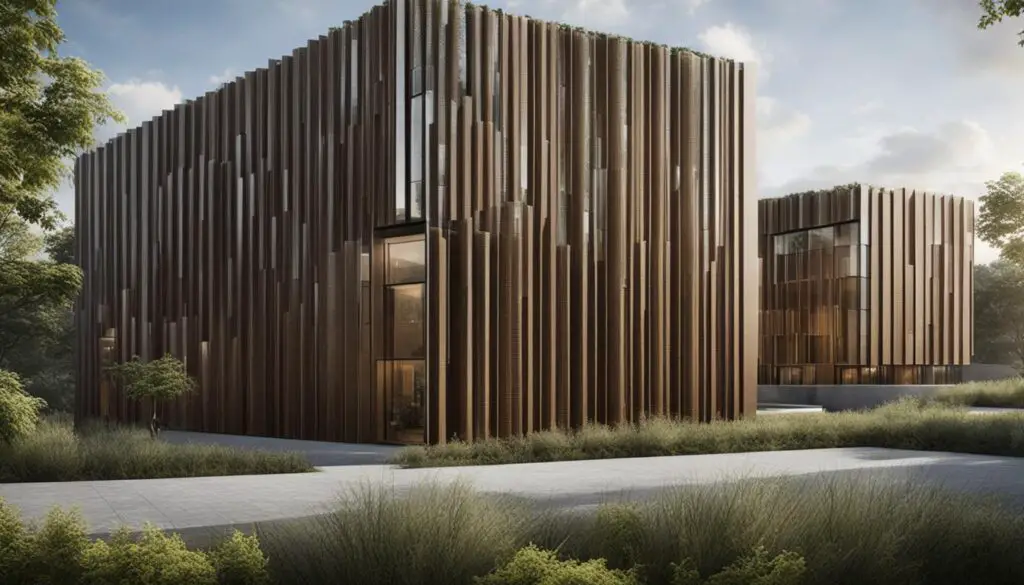
Enhancing Employee Well-being in Tech-Integrated Biophilic Spaces
Tech integration in biophilic architecture goes beyond sustainability and energy efficiency; it also plays a pivotal role in enhancing employee well-being. By seamlessly incorporating technology into the workplace, organizations can create a harmonious environment that promotes physical health, mental wellness, and productivity.
One of the key aspects of tech integration in biophilic spaces is wearable technology. Fitness trackers and smartwatches, often connected to building software, enable real-time monitoring and improvement of employee health. These devices track various metrics, such as heart rate, steps taken, and sleep patterns, providing valuable insights to both employees and employers.
Smart desks and chairs equipped with sensors are another essential component of tech-integrated biophilic spaces. These intelligent furniture pieces promote good ergonomics and offer real-time feedback on posture and movement. By reminding employees to sit properly or take regular breaks, these innovative solutions help reduce the risk of musculoskeletal disorders and increase overall comfort.
In addition to real-time health monitoring, health data alerts based on wearable fitness trackers provide employees with critical information about potential health risks. These alerts highlight issues such as prolonged sedentary behavior, high stress levels, or irregular sleep patterns, allowing individuals to take preventive action and make necessary lifestyle changes.
Wellness coaching apps further enhance employee well-being in tech-integrated biophilic spaces. These apps provide personalized guidance on nutrition, exercise, and stress management, helping individuals adopt healthier habits and cope with workplace demands effectively. By offering tailored recommendations and tracking progress, these apps empower individuals to take control of their well-being.
Beyond individual health and wellness, the integration of audiovisual (AV) technology in the workplace has a significant impact on employee well-being. AV technology fosters virtual collaboration, making remote work more efficient and ensuring seamless communication among teams. This technology facilitates dynamic presentations, immersive video conferences, and interactive brainstorming sessions, enabling employees to work together effectively, regardless of their physical location.
The combination of wearable technology, smart desks and chairs, health data alerts, wellness coaching apps, and AV technology creates a holistic approach to employee well-being in tech-integrated biophilic spaces. By leveraging these innovations, organizations can create work environments that prioritize the physical and mental health of their employees, leading to increased productivity, motivation, and job satisfaction.
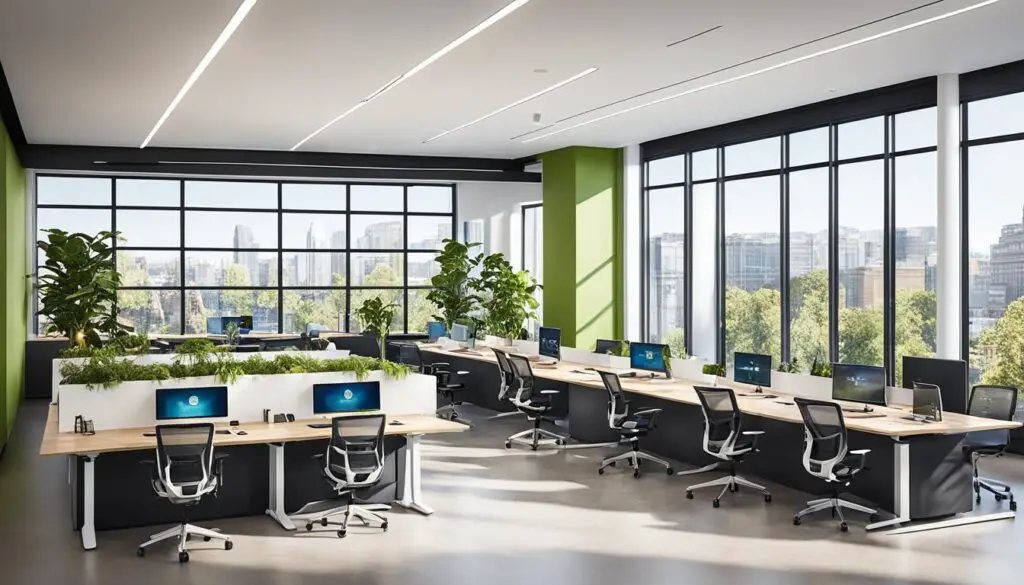
Table: Benefits of Enhancing Employee Well-being in Tech-Integrated Biophilic Spaces
| Benefits | Explanation |
|---|---|
| Improved physical health | Real-time monitoring and preventive measures reduce health risks and promote a healthy lifestyle. |
| Enhanced mental wellness | Wellness coaching apps and stress management tools foster a positive work environment and support employees’ mental health. |
| Increased productivity | Ergonomic furniture, seamless collaboration through AV technology, and personalized wellness support contribute to higher productivity levels. |
| Heightened employee satisfaction | Investing in employee well-being demonstrates a commitment to their overall satisfaction, resulting in increased loyalty and retention. |
The Importance of Energy Efficiency in Biophilic Architecture
Energy efficiency is a crucial aspect of biophilic architecture, as it directly addresses the global challenges of energy consumption and emissions. Buildings account for 30% of global final energy consumption and 26% of energy-related emissions, making it imperative to prioritize energy efficiency in building design and construction.
Improving energy efficiency through sustainable design principles not only reduces operational costs but also creates healthier indoor environments and contributes to the fight against climate change. By optimizing the cooling, heating, and lighting systems within buildings, architects and designers can significantly minimize energy waste and decrease the overall environmental impact.
One key area of focus for energy efficiency in biophilic architecture is the design of building envelopes. The building envelope serves as the interface between the interior and exterior environment, and its design plays a crucial role in regulating heat transfer, air infiltration, and natural lighting.
Architects can employ various strategies when optimizing building envelopes for energy efficiency. These strategies include incorporating insulation materials, using advanced glazing systems that balance thermal performance and natural light transmission, and implementing shading devices to mitigate solar heat gain. By emphasizing the design of the building envelope, architects can create structures that are energy-positive or even energy-neutral, meaning they generate more energy than they consume.
The transition to clean energy sources further strengthens the energy efficiency goals of biophilic architecture. By integrating renewable energy systems, such as solar panels or geothermal heating and cooling systems, buildings can reduce their reliance on fossil fuels and significantly decrease their carbon footprint. The adoption of clean energy technologies helps promote a clean energy transition and supports global efforts to combat climate change.
Ultimately, building energy efficiency is a pivotal part of future-proofing structures and ensuring a sustainable and eco-friendly built environment. By embracing energy-efficient design principles and integrating clean energy solutions, biophilic architecture can play a significant role in reducing global energy consumption, minimizing direct and indirect emissions, and fostering a clean energy transition.
Conclusion
The integration of technology in biophilic architecture offers a myriad of benefits, contributing to enhanced sustainability, occupant well-being, and future-proofing of structures. By harnessing the power of cutting-edge technologies such as smart materials, responsive fenestration systems, and energy-saving devices, architects and designers can create buildings that actively support sustainability goals while providing comfortable and responsive environments for occupants.
The evolution of façade and fenestration materials, combined with the seamless integration of technology, enables the creation of visually stunning and customizable structures that promote biophilic design principles. This innovative approach not only prioritizes the well-being of individuals but also ensures a harmonious coexistence with nature.
Ultimately, the integration of tech in biophilic architecture plays a pivotal role in shaping the future of sustainable building designs, improving energy efficiency, and enhancing the overall well-being of occupants. By embracing this holistic approach, we can create spaces that not only inspire and delight but also actively contribute to a more sustainable and resilient future.
FAQ
What is biophilic architecture?
Biophilic architecture is a sustainable design approach that incorporates natural elements and features to create healthier and more environmentally friendly buildings.
How does tech integration enhance biophilic architecture?
Tech integration in biophilic architecture enhances sustainability and occupant well-being in modern building designs by leveraging cutting-edge technologies, such as smart materials and responsive fenestration systems. This optimization of energy efficiency, improved air quality, and responsive environments for occupants.
What are the future trends in façade designs by 2050?
By 2050, façade designs are expected to undergo remarkable transformations driven by evolving architectural trends and technological advancements. One prominent change will be the integration of smart materials and technologies in façades, optimizing energy efficiency, and enhancing occupant comfort.
What materials will be used in façades and fenestrations by 2050?
Façade and fenestration materials in 2050 will see significant evolution driven by sustainability, technology, and aesthetic trends. There will be a fusion of aesthetics and functionality incorporating sustainable materials like recycled glass and energy-efficient coatings.
How will tech integrate with façades and fenestrations in the future?
Tech integration in façades and fenestrations will include features such as energy harvesting, smart glass technology, living walls, responsive materials, and augmented reality displays. These technologies will create comfortable and responsive environments, prioritize energy efficiency, and integrate with smart building infrastructure.
How does tech integration in biophilic architecture enhance employee well-being?
Tech integration in biophilic architecture goes beyond sustainability and energy efficiency to enhance employee well-being. Through wearable technology, smart desks and chairs, health data alerts, wellness coaching apps, and AV technology, employees’ health and productivity can be monitored, improved, and promoted in real-time.
Why is energy efficiency important in biophilic architecture?
Energy efficiency plays a crucial role in biophilic architecture as buildings account for a significant portion of global energy consumption and emissions. Improving energy efficiency through sustainable design principles lowers costs, improves air quality, and enhances occupant comfort, contributing to a more sustainable and eco-friendly built environment.



